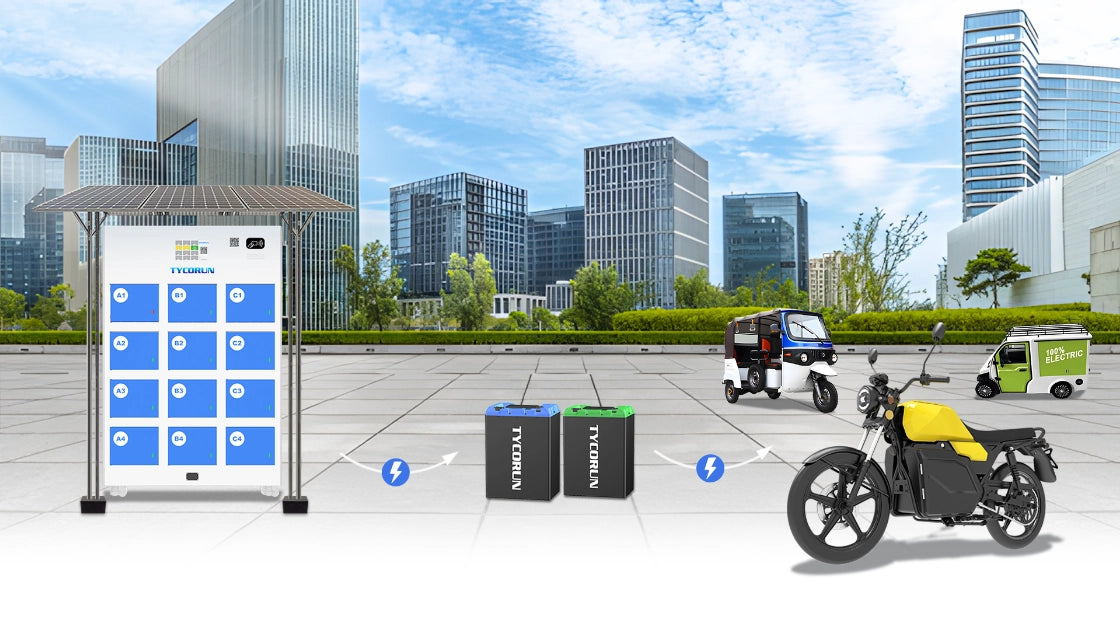Electric motorcycles have become one of the fastest-growing transportation choices for urban commuters and adventure riders alike. With increasing awareness of sustainability, quiet performance, and lower operating costs, these machines are quickly replacing traditional gas bikes. Yet, one question always comes first for new riders: How far can my electric motorcycle go on a single charge?
This article will serve as your complete guide to electric motorcycle range — explaining how it’s calculated, the factors that influence it, and tips to help you make the most of every charge.

Main content:
- What Does Electric Motorcycle Range Mean?
- Average Electric Motorcycle Range by Type
- Top Factors That Affect Electric Motorcycle Range
- Electric Motorcycle Range Calculator
- How to Calculate Electric Motorcycle Range
- How to Maximize and Maintain Electric Motorcycle Range
- Battery Technology and the Future of Electric Motorcycle Range
- Common Misconceptions About Electric Motorcycle Range
- Conclusion
- FAQs
What Does Electric Motorcycle Range Mean?

The term electric motorcycle range refers to the total distance an electric motorcycle can travel on a single full charge. It’s similar to the “miles per tank” concept for gas motorcycles but measured in miles (or kilometers) per charge instead. (Read: Electric motorcycle vs gas)
This range varies greatly depending on factors such as battery capacity, motor efficiency, riding speed, terrain, and even weather. Some entry-level models offer around 40–60 miles per charge, while high-end electric motorcycles can easily exceed 200 miles under optimal conditions.
For riders considering an electric motorcycle, understanding range helps set realistic expectations for daily commuting, weekend trips, or touring adventures.
The range of your motorcycle determines how confidently you can ride. For short urban rides, a smaller-capacity battery might be sufficient. However, for longer trips, a higher range becomes essential.
Here’s why understanding electric motorcycle range is so important:
- Travel planning: Knowing your range helps you map out charging stops and prevent unexpected power depletion.
- Purchase decisions: Range is a key comparison factor when choosing between models or brands.
- Usage costs: A more efficient battery means fewer charges and lower energy bills.
- Safety: Running out of power on the road can be risky, especially in remote areas.
Read: Motorcycle gear for men
Average Electric Motorcycle Range by Type
Just like traditional bikes, electric motorcycles come in various types — from city commuters to off-road beasts and high-performance sports models. Each category has its own typical electric motorcycle range.

This table shows that electric motorcycle range improves as battery technology advances. Even mid-range models now achieve distances that were once only possible with premium bikes.
Top Factors That Affect Electric Motorcycle Range
While the manufacturer’s specifications give an ideal figure, real-world range often differs. Below are the most common factors influencing electric motorcycle range:
1. Battery Capacity
The battery is the heart of your motorcycle. Measured in kilowatt-hours (kWh), it determines how much energy is stored. A larger battery means a longer range — but also adds weight and cost.
2. Speed and Riding Style
Aggressive acceleration, high-speed riding, and frequent braking consume more energy. Maintaining moderate speeds and smooth throttle control can significantly improve electric motorcycle range.
3. Terrain and Elevation
Hilly routes and rough terrains require more power to overcome resistance. Flat, smooth roads allow for better efficiency and extended range.
4. Rider and Cargo Weight
Extra weight means more energy demand. Carrying heavy luggage or a passenger reduces electric motorcycle range noticeably.
5. Temperature and Weather
Cold temperatures affect battery chemistry, reducing available energy. In contrast, extreme heat can cause overheating or energy inefficiency.
6. Tire Pressure and Maintenance
Underinflated tires increase rolling resistance. Keeping your motorcycle well-maintained helps maximize electric motorcycle range and overall performance.
Electric Motorcycle Range Calculator
If manual calculations feel complex, online tools can help estimate electric motorcycle range more conveniently.
Here’s how to use them effectively:
- Find a reliable calculator: Search for “electric motorcycle range calculator” or “battery range calculator” online.
- Enter your parameters: Input the battery capacity (Ah), voltage (V), average riding speed (km/h), and motor power (W).
- Calculate: Click “Calculate” to view the estimated range.
- Compare results: Remember that calculators provide theoretical estimates — your actual mileage will depend on real-world conditions.
How to Calculate Electric Motorcycle Range
If you’ve ever wondered how brands determine mileage claims, there’s a basic formula to estimate electric motorcycle range using a few essential parameters:
Range (km) = (Battery Capacity (Ah) × Battery Voltage (V) × Speed (km/h)) / Motor Power (W)
Let’s break this down:
- Battery Capacity (Ah): This shows how much energy your battery can store. A higher amp-hour rating means more available power.
- Battery Voltage (V): A higher voltage improves energy output and performance, often extending range.
- Speed (km/h): The faster you ride, the more power you consume — finding an economical speed gives better efficiency.
- Motor Power (W): While more power improves acceleration, it also consumes energy faster, reducing your range.
This calculation gives a theoretical range under ideal conditions. In real-world riding, external factors like terrain, temperature, and weight also play major roles.

Understanding electric motorcycle range also involves knowing how long the motorcycle battery can keep your bike running before it needs a recharge. To calculate how long your motorcycle can keep running before the battery drains, use this formula:
Battery Run Time (hours) = Battery Capacity (Wh) / Motor Power (W)
Since battery capacity (Wh) = Battery Capacity (Ah) × Battery Voltage (V), you can determine how long your motorcycle can sustain a given power load.
For example, if you have a 72V, 32Ah battery and a 1000W motor:
- Battery capacity = 72 × 32 = 2304Wh
- Battery run time = 2304 / 1000 = 2.3 hours
- If your average speed is 50 km/h → Range = 2.3 × 50 = 115 km
That’s how manufacturers estimate their electric motorcycle range specifications.
How to Maximize and Maintain Electric Motorcycle Range
If you want to make the most of your ride, here are proven strategies to increase your electric motorcycle range:

- Use Eco Mode or Range Mode – Many e-motorcycles have settings that optimize power output for longer rides.
- Avoid Sudden Acceleration – Smooth and steady riding conserves energy.
- Plan Your Route Wisely – Choose flatter routes with fewer stops.
- Monitor Tire Pressure Regularly – Proper inflation improves efficiency.
- Avoid Full Throttle on Highways – Riding at moderate speeds greatly extends range.
- Precondition the Battery – Warming up the battery before cold-weather rides helps maintain optimal electric motorcycle range.
- Keep Software Updated – Some manufacturers release firmware updates that improve energy management and battery performance.
Battery Technology and the Future of Electric Motorcycle Range
The future looks bright for electric motorcycles. Advances in lithium-ion chemistry, solid-state batteries, and improved energy density are driving major gains in electric motorcycle range.
Solid-state batteries, for example, promise faster charging times, longer lifespans, and up to 50% more capacity in the same space. As manufacturers adopt these technologies, 300–400-mile ranges could soon become standard.
Additionally, smart energy management systems and regenerative braking improvements will continue to push efficiency even further.
Common Misconceptions About Electric Motorcycle Range
- Myth: Electric motorcycles can’t go far.
Reality: Many 2025 models already rival gas bikes with 200+ miles of range. - Myth: Range drops drastically after a year.
Reality: With good care, lithium batteries retain 80–90% capacity even after years of use. - Myth: Charging takes too long.
Reality: DC fast chargers can recharge 80% in less than an hour.
Understanding the truth behind these myths allows you to appreciate how far electric motorcycle range technology has progressed.
Conclusion
As technology continues to advance, the question “How far can my e-motorcycle go?” is being redefined every year. Modern electric bikes are faster, more efficient, and capable of traveling impressive distances on a single charge. Understanding your electric motorcycle range allows you to plan better, ride smarter, and take full advantage of what today’s electric mobility has to offer. Whether you’re a daily commuter, a weekend hobbyist, or a long-distance touring enthusiast, knowing your range helps you manage your ride with confidence and efficiency.
As battery technology improves, charging networks expand, and efficiency increases, the question is no longer “Can I go far enough?” but rather “How much farther can I go next year?” With every new innovation, the electric motorcycle range continues to grow — paving the way for a greener, faster, and more thrilling future of two-wheeled travel. The road ahead is electric, and it’s only getting better.
FAQs
How can I increase my electric motorcycle range?
You can extend your electric motorcycle range by maintaining moderate speeds, avoiding aggressive acceleration, reducing weight, and keeping tires properly inflated. Regular battery maintenance also helps improve efficiency.
Does cold weather affect electric motorcycle range?
Yes. Cold temperatures can reduce battery performance, leading to a 10–30% decrease in range. Parking in a warm area and preheating the battery before riding can help minimize this effect.
Will frequent charging affect the battery life performance?
Frequent charging won’t harm your electric motorcycle battery if done properly. In fact, regular top-ups are better than letting the battery fully drain, as this helps maintain battery health and extend lifespan
Related Articles: Bad motorcycle battery, Top 10 electric two-wheelers with swappable batteries in Asia, Top 10 motorcycle hub motor manufacturers in the World
















